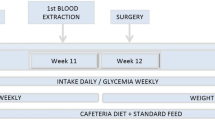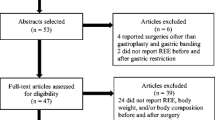Abstract. Gastric reduction operations are designed to control body weight by establishing a small, meal-size juxtaesophageal, gastric pouch that empties into the jejunum (gastric bypass) or the larger portion of the stomach (gastroplasty). If the outlet of the pouch is too small, a patient may be limited to ingesting clear liquids. Vomiting then occurs if heavier liquids or normal foods are taken. An occasional patient has difficulty eating properly and vomits even though the pouch volume and outlet are of optimum size. For a patient who reports vomiting, a distinction must be made between episodic improper eating and uncontrolled starvation. Three types of starvation injury are described: (1) sudden death from protein malnutrition; (2) refeeding syndrome; and (3) Wernicke-Korsakoff syndrome. The mechanisms of the development, manifestations, prevention, and treatment of these complications are explained. Surgeons who treat severe obesity should be aware of these complications and be prepared to manage patients who have uncontrolled vomiting so that such complications either do not develop or are recognized and treated as early as possible before serious and irreversible injury occurs.
Similar content being viewed by others
Author information
Authors and Affiliations
Rights and permissions
About this article
Cite this article
Mason, E. Starvation Injury after Gastric Reduction for Obesity. World J. Surg. 22, 1002–1007 (1998). https://doi.org/10.1007/s002689900507
Issue Date:
DOI: https://doi.org/10.1007/s002689900507




